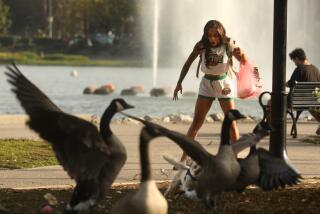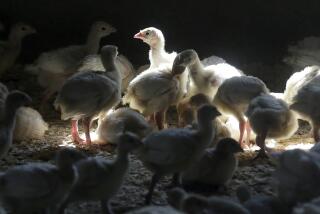Hawaii: You might see rare state bird -- the nene -- but keep your distance
You may get a chance to spot a nene on Hawaii’s Big Island in the coming months, but wildlife experts are warning visitors to steer clear of the rare geese.
Nene -- pronounced nay-nay -- mate and nest December through April. Pairs of them can be seen flying overhead and grazing with their goslings.
Officials at Hawaii Volcanoes National Park are warning people not to feed nene, which are one of the rarest breeds of geese in the world. By the 1940s their numbers had dwindled to 50. Recovery efforts have boosted the flock to 200 within the park and about 2,000 across the islands.
Nene crossing signs are posted along roads where the native geese are known to congregate.
“Nene are most vulnerable to vehicles this time of year,” Kathleen Misajon of the park’s Nene Recovery Project said in a news release. “They are focused on eating and could be out foraging from dawn to dusk. They blend in with their surroundings, and in low-light periods, they are especially hard for motorists to spot.”
Misajon also urged people not to feed the nene, because that can lure them out of the brush and onto roadways. Areas within the park where nene, the Hawaii state bird, are nesting may also be temporarily closed off.
Motorists are asked to report sightings of nene on roadways. Within Hawaii Volcanoes National Park, call (808) 985-6001. Elsewhere, call (808) 974-4221.
More to Read
Sign up for The Wild
We’ll help you find the best places to hike, bike and run, as well as the perfect silent spots for meditation and yoga.
You may occasionally receive promotional content from the Los Angeles Times.






